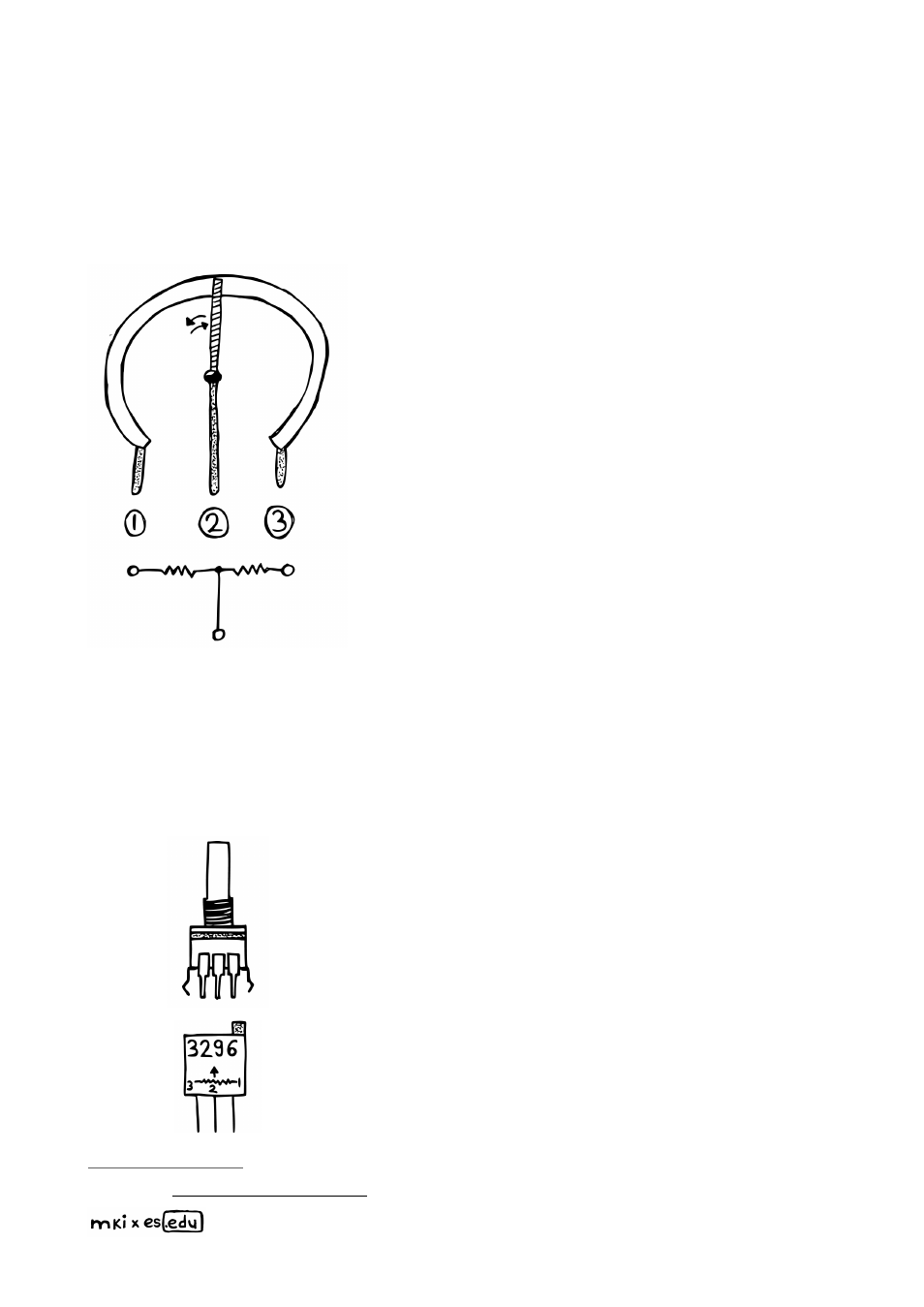Potentiometers – Erica Synths EDU DIY EG Eurorack Module Kit User Manual
Page 30

POTENTIOMETERS
Potentiometers can be used as variable resistors that you control by turning a knob
.
But, and that’s the handy part, they can also be set up as variable voltage dividers
.
To see how that works, let’s imagine we open one up.
Inside, we would find two things: a round track of
resistive material with connectors on both ends plus
what’s called a wiper. This wiper makes contact with the
track and also has a connector. It can be moved to any
position on the track. Now, the resistance value
between the two track connectors is always going to
stay exactly the same. That’s why it's used to identify a
potentiometer: as a 10k, 20k, 100k etc. But if you look
at the resistance between either of those connectors
and the wiper connector, you’ll find that this is
completely dependent on the wiper’s position.
The logic here is really simple:
the closer the wiper is
to a track connector, the lower the resistance is
going to be between the two
. So if the wiper is dead
in the middle, you’ll have 50 % of the total resistance
between each track connector and the wiper.
From here, you can move it in either direction and thereby shift the ratio between the two
resistances to be whatever you want it to be. By now, you might be able to see how that
relates to our voltage divider. If we send our input signal to connector 1 while grounding
connector 3, we can pick up our output signal from the wiper. Then by turning the
potentiometer’s knob, we can adjust the voltage level from 0 to the input voltage –
and
anything in between.
In these kits, you will encounter di
ff
erent types of
potentiometers. First, there’s the regular, full-size variant
with a long shaft on top. These are used to implement
user-facing controls on the module’s panel and they
usually – but not always – indicate their value directly on
their casing. Sometimes, they’ll use a similar encoding
strategy as capacitors, though.
Second, we’ve got the trimmer potentiometer, which is
usually much smaller and doesn’t sport a shaft on top.
Instead, these have a small screw head which is
supposed to be used for one-time set-and-forget
calibrations. Trimmers usually encode their value.
Look up for a detailed breakdown.
30
